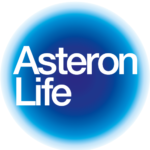What does TPD mean?
TPD refers to Total and Permanent Disability. This is a type of insurance cover which helps with financial support if you become totally and permanently disabled, and are no longer able to work.


What counts as being totally and permanently disabled?
Each insurance provider may have slightly different definitions which will be outlined in your insurance policy. However, it may include absence from work because of sickness or injury, being diagnosed as so disabled that you are unlikely to work again, suffering the total and permanent loss of two limbs or sight in both eyes, irreversible loss of cognitive function, or not being able to perform several activities of daily living.
These are just some possible examples; however, your Moose insurance adviser can talk you through the definitions for each provider in more detail.
How will I get paid if I become totally and permanently disabled?
If you meet the criteria for being totally and permanently disabled, you receive a lump sum payment. When you take out TPD cover, you will need to choose a sum assured – this is the amount you will be paid out.


How will I get paid if I am partially disabled?
This will depend on your insurance provider; however, most providers include a definition of partial disablement (including loss of use of one limb, or loss of sight in one eye), and may pay you up to a certain amount (as outlined in their policy documents).
What is the difference between 'own occupation' and 'any occupation'?
When you take out TPD cover, you will be asked to select ‘own occupation’ or ‘any occupation’. Choosing ‘own occupation’ means that you will usually pay higher premiums, but this is because you are more likely to receive your benefit if your disability renders you unable to work in your specific job. Choosing ‘any occupation’ means that if you are disabled and unable to work in your own occupation, but may be able to work in another job, you may not receive your TPD benefit.
Let’s use a builder, for example, who has fallen and injured both of his legs, leaving him unable to continue working as a builder. If he chooses an ‘own occupation’ TPD insurance policy, then he will likely receive his benefit because he is physically unable to carry out his work as a builder. However, if he chooses ‘any occupation’, it could be argued that he can continue to work in another role, such as an administrator, which decreases his chances of receiving a full benefit.
The type of cover you take out is unique to you, and can be fully discussed with your Moose insurance adviser.


Does TPD cover have a waiting period?
This will depend on the insurance provider, but in most cases, there will be a waiting period before you receive your benefit if you are classified as totally and permanently disabled. The waiting period is usually between 3 and 6 months.
Can I still take out TPD cover even if I am not working (e.g., retired, or a homemaker)?
Many insurance providers still offer cover for people who are not working, as long as they keep paying their premiums. Talk to a Moose insurance adviser to find out more.

Our insurance partners




Benefits of Getting TPD insurance
01 Peace of mind
It is impossible to predict how life will unfold; however, TPD insurance can offer you peace of mind to ensure that you will be appropriately cared for when it comes to claim time.
02 Financial certainty
Taking out TPD cover can relieve the financial stress associated with not being able to work and receive an income. TPD insurance means that you won’t have to dip too far into your savings to pay for living expenses and rehabilitation or medical costs.
03 Trusted advice
Moose insurance advisers are here to make sure your insurance is fit for purpose. We tailor a plan which provides the right cover to meet your needs. This ensures that you are not under- or over-investing in your insurance policy. When it comes to claim time, we are also here to guide you through the process.
04 Lump sum payment
If you are classified as totally and permanently disabled, you will receive a lump sum payment. A lump sum payment could help with living costs and medical expenses.
05 2 levels of payment
You get to choose between ‘own occupation’ and ‘any occupation’ cover. This provides flexibility with your cover, and can be tailored to your personal situation.
06 Partial benefit support
TPD insurance may help with financial support if you fit the definition of partially disabled. This provides an even greater level of certainty and cover options should you ever need to claim.
Why should I use an insurance adviser?
An insurance adviser will be able to run through a series of questions with you, to gather enough information to determine your financial position. This will enable us to understand what type and level of cover would be required to meet your needs, whilst balancing the affordability of your premiums.
Moose Mortgages & Insurance is accredited with a range of providers. This enables us to provide our clients with competitive pricing, and solutions to meet your needs.
- Advice recommended to suit your individual circumstances
- Access to a range of insurance providers
- Save time by letting us do the heavy lifting on your behalf
- On-going management of your insurance policy
- No fee service for our recommendation
Use our link ‘Get Started’ to create a profile, and complete a series of questions to identify what types of insurance you may be interested in. This will take only a couple minutes.
Once you’ve completed our online fact find, an adviser will be in touch to arrange a time to meet you in person, or online through video call to discuss the information disclosed. We will add any additional information that may be fit for purpose, along with a needs analysis to determine suitability of the insurance.
An adviser disclosure document will be provided outlining the adviser’s scope of service, personal details including FSP (Financial Service Provider) registration number, and how we are paid by the insurance companies. If a fee applies for our advice this would be disclosed upfront prior to you engaging our services
After we’ve gathered all the information from our meeting, we will begin the process of research and analysis. This will include comparing product provider’s pricing, product benefits and features, insurer financial ratings, and claim payout percentages for the previous year.
We will use our research findings to tailor a recommendation that is aligned to the needs based information gathered in our first meeting.
Once our recommendations are ready we will arrange a time to catch up with you to review the document either in person, or online through screenshare.
In this second meeting in person, or through screenshare, the adviser will talk you through the options in our statement of advice (recommendation) document, and answer any questions you may have.
If the advice provided requires variations the adviser will take notes, and rework the recommendations to ensure your needs are met prior to you either accepting, or declining the recommendations.
If you accept the recommendations provided by the adviser, we will lodge an application to the insurance provider on your behalf. This will require us to complete the insurer’s health questionnaire along with your personal details. This application usually takes around 20 – 30 minutes to complete.
Your completed application will be sent to underwriting for approval, where they will either issue the policy if there are no conditions, or come back to us to advise you there are conditions for us to work through prior to the insurer providing you a policy offer to accept.
Your adviser will contact you annually to review your insurance. This is to ensure that your cover remains fit for purpose through the changes in your life. We are here to ensure you are looked after for the long term.
